A broken-down vehicle is more than just an idle asset; it's a loss of income and a blow to your reputation. A customer waiting weeks for a simple part is an unhappy customer.
The most common replacement parts for electric tricycles are consumables that wear down with use, like tires, brake pads, and lights. Electrical components like the controller and charger are also frequent replacement items due to environmental stress and daily use.
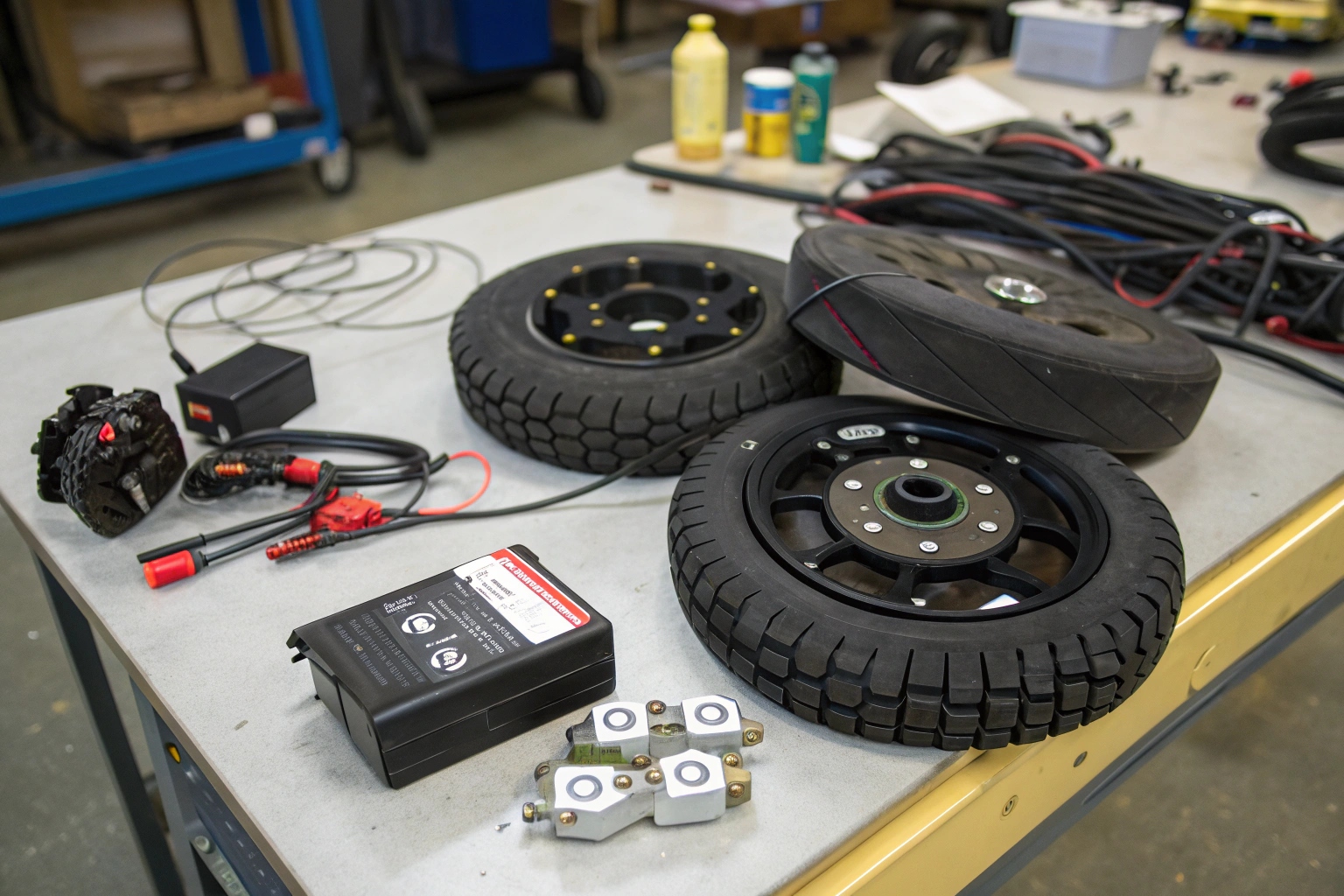
Como um factory owner, I can tell you that a successful import business isn't just about selling vehicles; it's about keeping them on the road. The most professional importers I work with plan their spare parts inventory from their very first order. They understand that having the right part on hand can turn a major problem into a minor, 30-minute fix. This is why, at our AGL-Trike factory, we always include a calculated ratio of spare parts with every wholesale order. Let's break down exactly which parts you need to keep your business running smoothly.
Which Spare Parts Wear Out Most Quickly in Electric Tuk Tuks & Triciclos?
One of your vehicles is out of service, and you discover the problem is a simple, inexpensive part you don't have in stock. A $5 part is now costing you hundreds in lost revenue.
The fastest-wearing parts are always the "consumables"—components designed to wear down through friction or exposure. These include tires, brake pads or shoes, brake cables, and light bulbs, which need regular inspection and replacement.
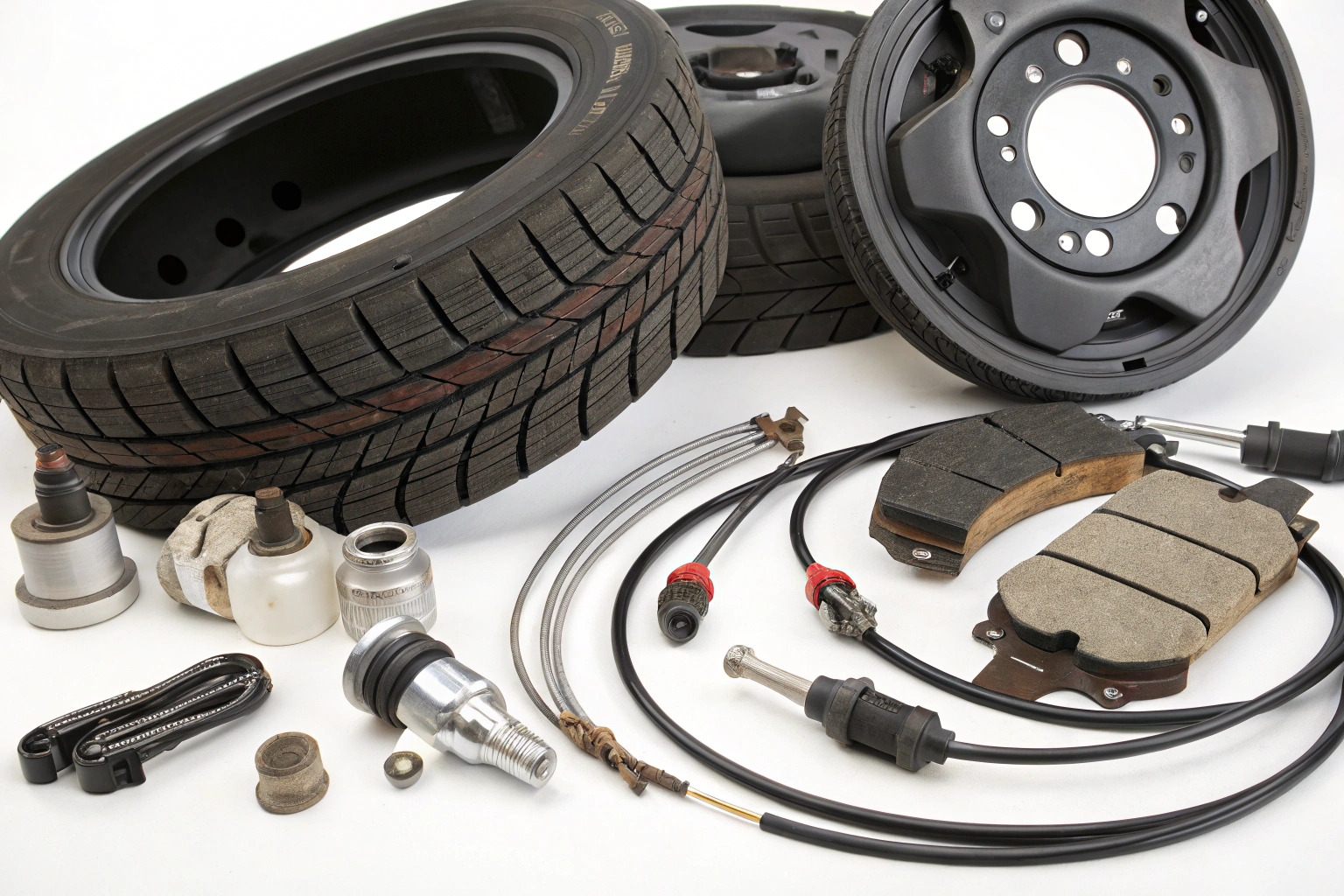
Think of these parts like the ink in your printer; you know you are going to need more. They are designed to be replaced as part of routine maintenance. Tires wear down from contact with the road, and the rate of wear depends heavily on road quality and vehicle load. Brake pads are designed to create friction to stop the vehicle, so they wear down with every stop. In a busy city delivery route, this happens fast. Brake cables can stretch or corrode over time, especially in humid or dusty climates, affecting braking performance. Lights and indicators are also high on the list, not just from bulb burnout, but also from vibration and minor impacts that are common in daily commercial use. Stocking these items is non-negotiable. They are the foundation of any good maintenance program and ensure your customers can handle simple, predictable repairs without any delay.
How Often Do Batteries and Motors Require Replacement?
You worry that the two most expensive parts—the battery and motor—will fail unexpectedly, leading to a huge and unplanned cost. This fear can make you hesitant to invest in a fleet.
A good quality lithium-ion battery typically lasts 2 to 4 years, while a lead-acid battery may need replacement every 1-2 years. A brushless DC motor is very durable and can last over 5 years, often outliving the vehicle itself with proper care.
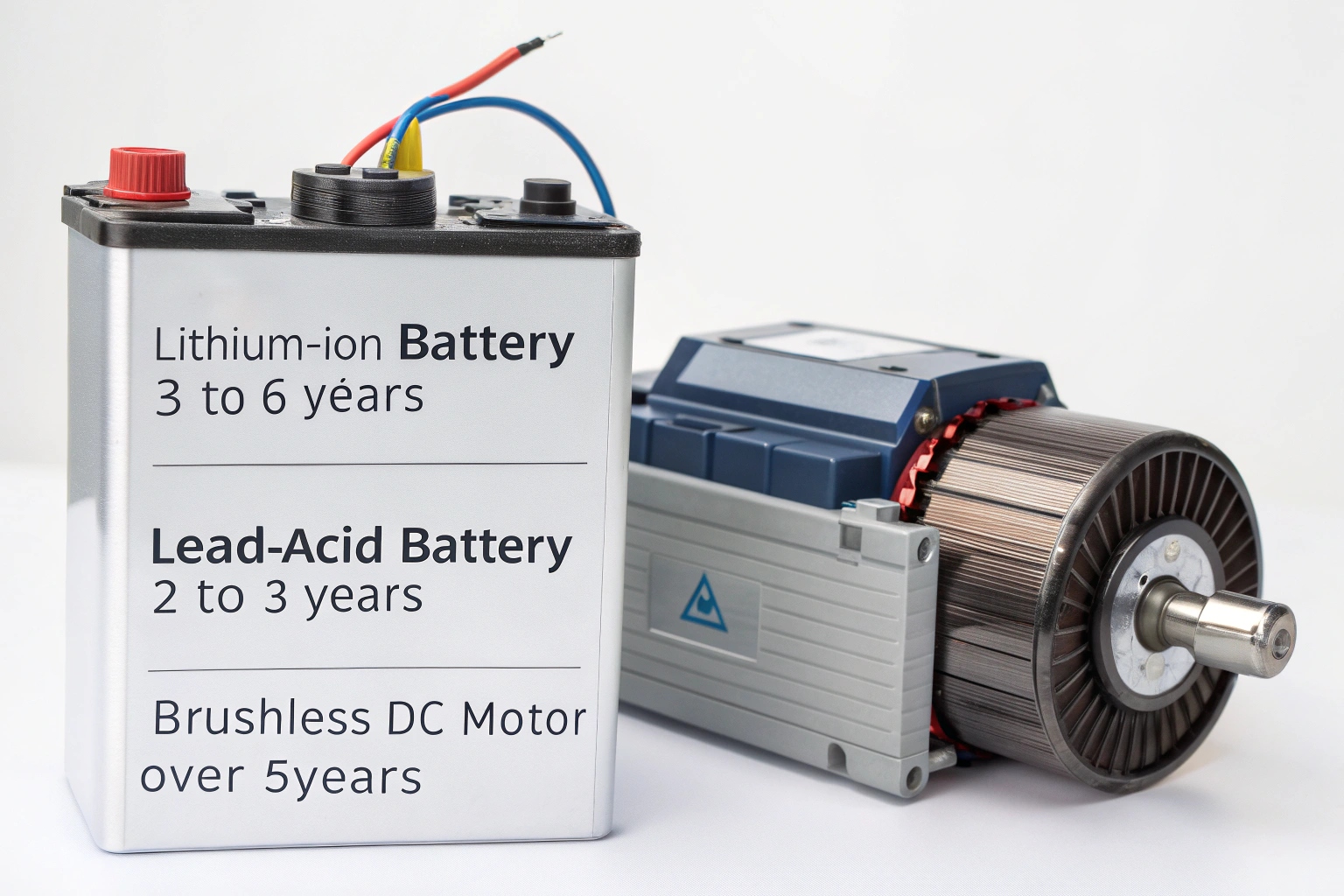
The motor and battery are the heart of the electric tricycle, but they have very different lifespans. The battery is, by nature, a consumable component, but a high-value one. Its life is measured in "charge cycles." UM lithium (LiFePO4) battery might offer 1500-2000 cycles, while a lead-acid battery offers only 300-500. The choice depends on your market's budget and your business model. The motor, on the other hand, is a true core component. Because brushless DC motors have very few moving parts, they are incredibly reliable. Failures are rare and usually involve the internal bearings or hall sensors after many years of heavy use, not the motor itself. For importers, this means planning for regular battery replacement in your financial projections but treating motor failure as a rare exception. You should keep a few motors in stock for emergencies, but you'll be replacing batteries far more often.
| Componente | Lifespan (Typical) | Key Influencing Factors |
|---|---|---|
| Lithium Battery | 2–4 years | Charge cycles, temperature, depth of discharge |
| Bateria de chumbo ácido | 1–2 years | Charge cycles, maintenance (watering), vibration |
| Brushless Motor | 5+ years | Overloading, water ingress, bearing wear |
What Electrical Components Commonly Need Spare Parts Support?
An electrical problem can be frustrating to diagnose. The tricycle is dead, the battery is charged, and your mechanic doesn't know where to start looking, wasting valuable time.
Besides the battery, the three most common electrical failure points are the controller, the charger, and the throttle/wiring harness. These parts manage power flow and can be sensitive to heat, moisture, and voltage spikes.
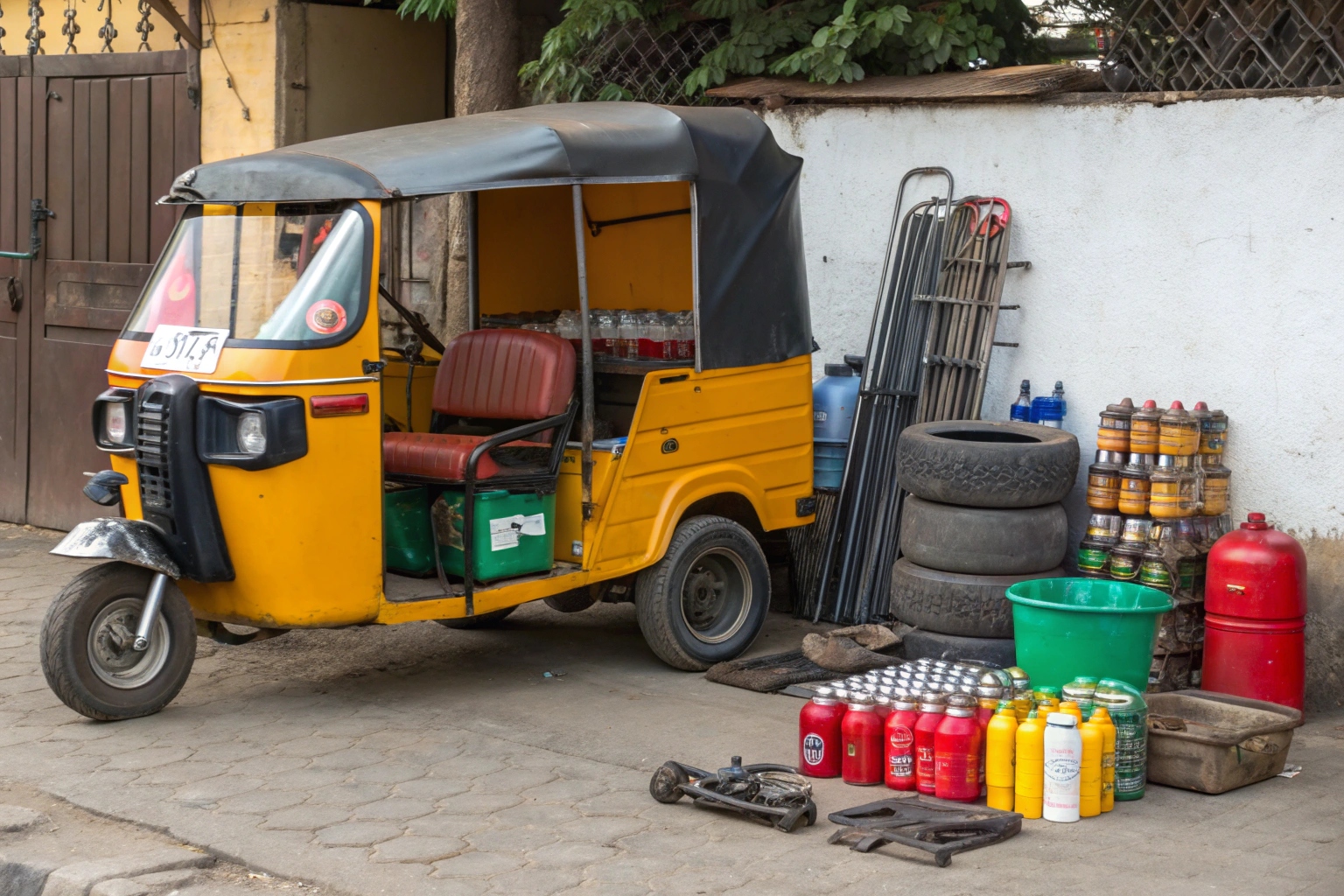
Think of the controller as the vehicle's brain. It takes your input from the throttle and tells the battery how much power to send to the motor. It works hard and generates heat, so it's often the first major electronic part to fail, especially if it's exposed to excessive heat or water. The charger is another surprisingly common failure item. It's often dropped or exposed to unstable power grids, which can damage its internal electronics. Finally, the wiring itself, including the throttle assembly and various connectors, can cause problems. Constant vibration can loosen connections, and humidity can cause corrosion. We design our trikes with sealed, waterproof connectors (IP65 rated), but in the real world of commercial use, damage happens. Keeping a stock of these three components—controller, charger, and a spare throttle—means you can solve 90% of non-battery electrical problems quickly.
Why Should Importers Stock Both Consumable and Core Spare Parts?
You want to keep costs low, so you only plan to stock cheap, fast-moving parts. But when a core component like a controller fails, your customer's vehicle is off the road for weeks while you wait for a shipment.
Stocking consumables keeps vehicles running day-to-day and generates steady service revenue. Stocking core parts is a form of business insurance; it protects your reputation and prevents long, costly downtimes for critical failures.
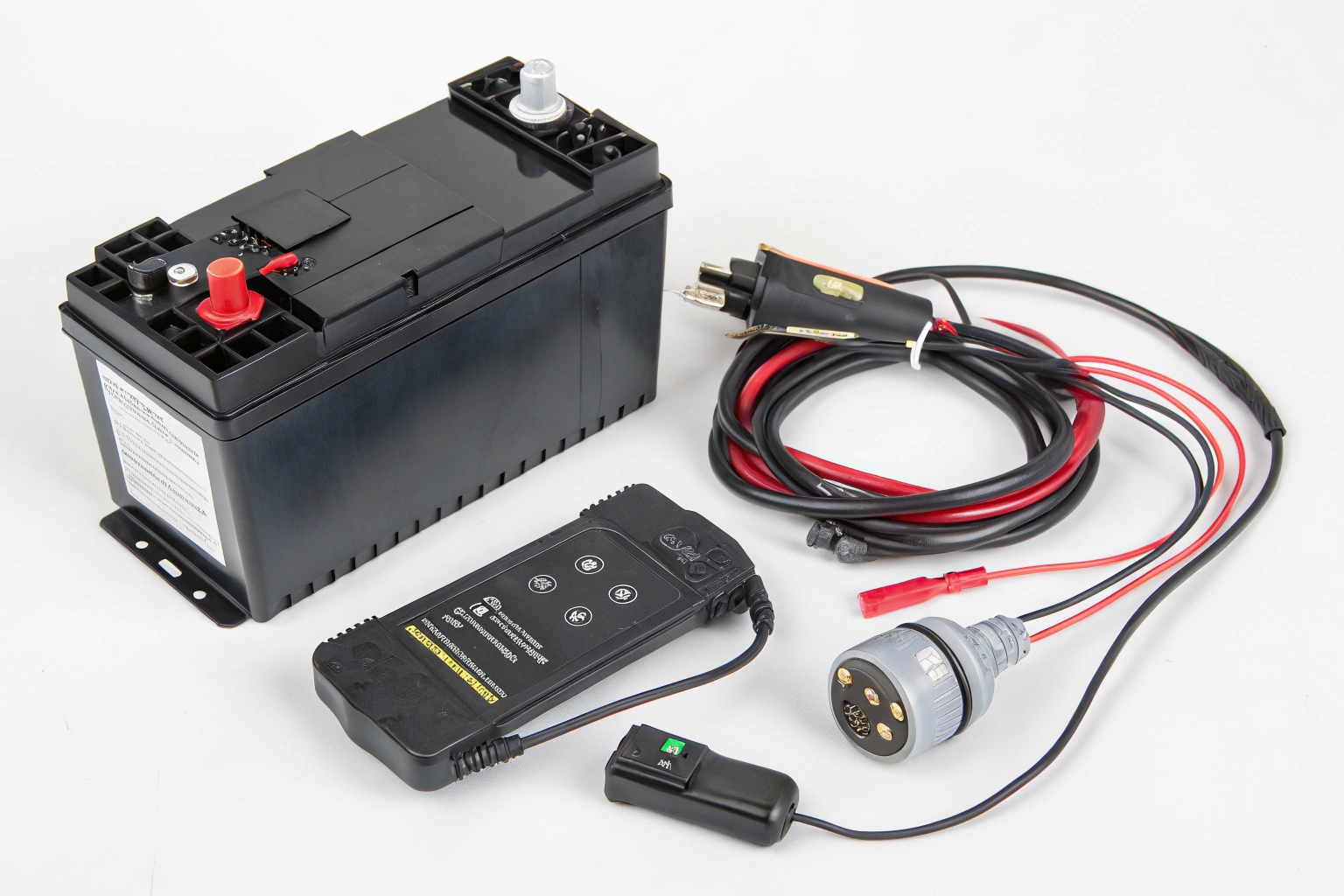
A smart inventory strategy has two tiers. The first tier is Consumíveis: tires, brake pads, cables, lights. These are your "fast-moving" parts. You will sell them regularly, they ensure basic vehicle safety, and they are a great source of recurring revenue for your service center. The second tier is Core Components: controllers, motors, chargers, and complete wiring harnesses. These are your "slow-moving" parts. You may only sell a few of these each year, but when a customer needs one, they need it urgently. Having a controller in stock turns a 4-week delay into a same-day repair. This is what builds a reputation for excellent after-sales support. This is exactly why we ship a starter set of both consumables and core parts with our wholesale orders. We want our partners to be prepared for anything. We help you build that inventory list based on your specific models and market.
Conclusão
A smart spare parts strategy, balancing everyday consumables with critical core components, is the key to running a profitable and reliable electric tricycle business. It's the foundation of great service.

